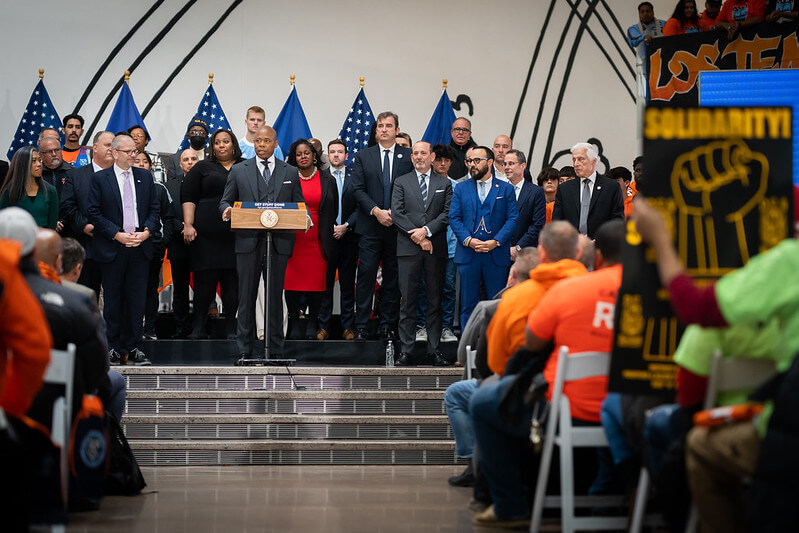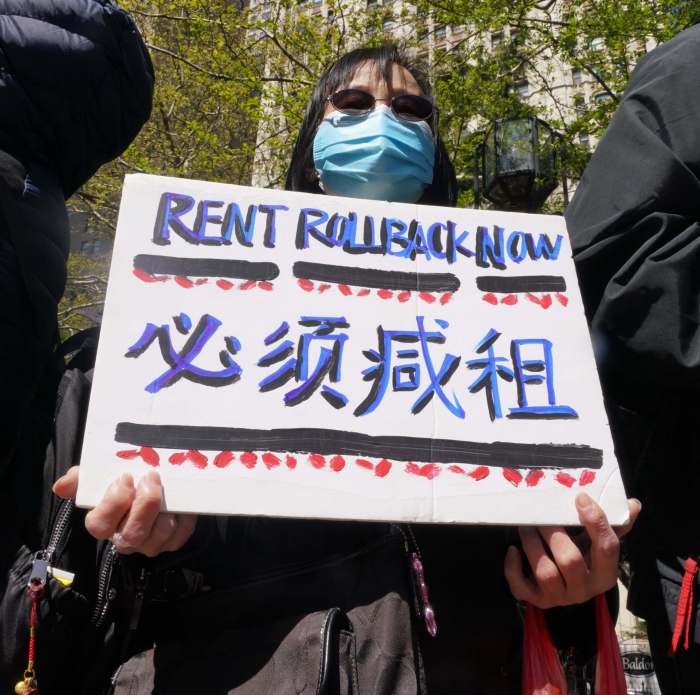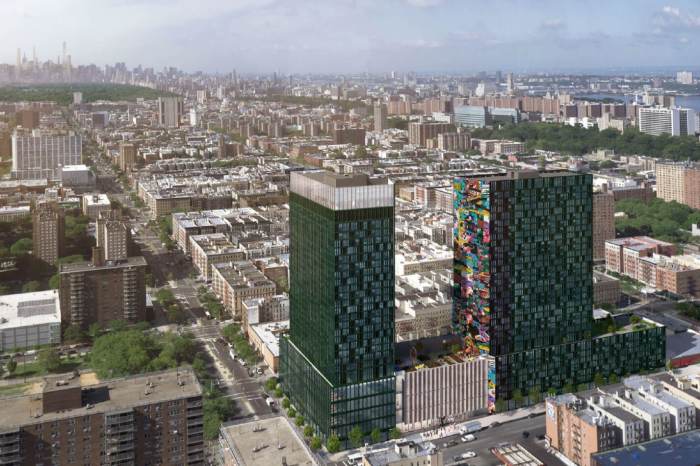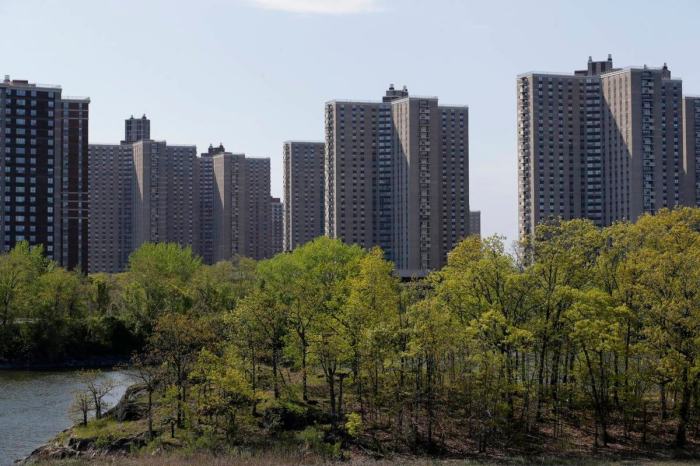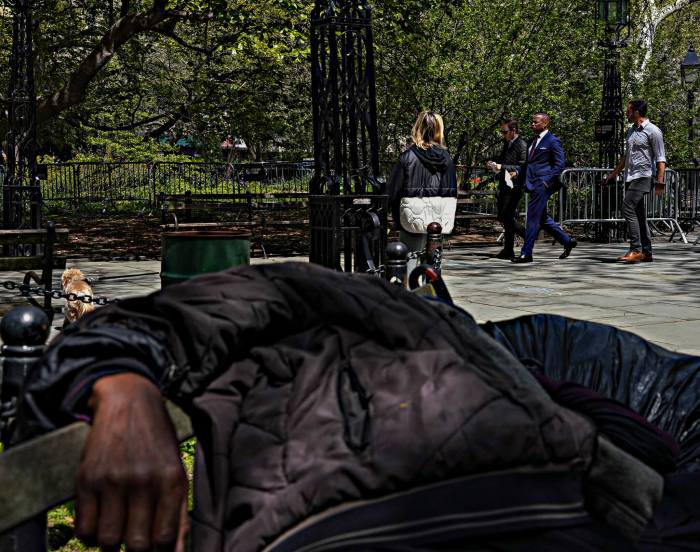Out with the old, in with the goals.
The vision for a redeveloped Willets Point that Mayor Eric Adams outlined Wednesday would transform the long-neglected industrial wasteland in Queens into a massive mixed-use development featuring 2,500 affordable housing units anchored by a new Major League Soccer arena.
The new 25,000-seat stadium – right across the street from Citi Field, the New York Mets’ digs – will serve as the new home of the New York City Football Club (NYCFC), and is slated to open in 2027, the mayor said. The stadium, which bears an approximately $780 million price tag, will be entirely paid for by the team.
While unveiling Phase Two of the redevelopment at the Queens Museum Wednesday morning, Adams said the project will transform what has been a blighted home to auto-body shops with very little modern infrastructure into a “brand new neighborhood.” His efforts to fast-track the project, and get it over the finish line, come after nearly two decades of attempts to redevelop the beleaguered neighborhood that started during the tenure of former Mayor Michael Bloomberg.
“For decades Willets Point has not been able to move to this final phase, it was not done,” Adams said. “And we were clear and focused on that with the right team, many of them here today. This was a blighted, underutilized and ignored piece of real estate in our city. It had little infrastructure and was prone to flooding. We have a once in a generation opportunity to create a brand new neighborhood. I’m proud to share our vision here today.”
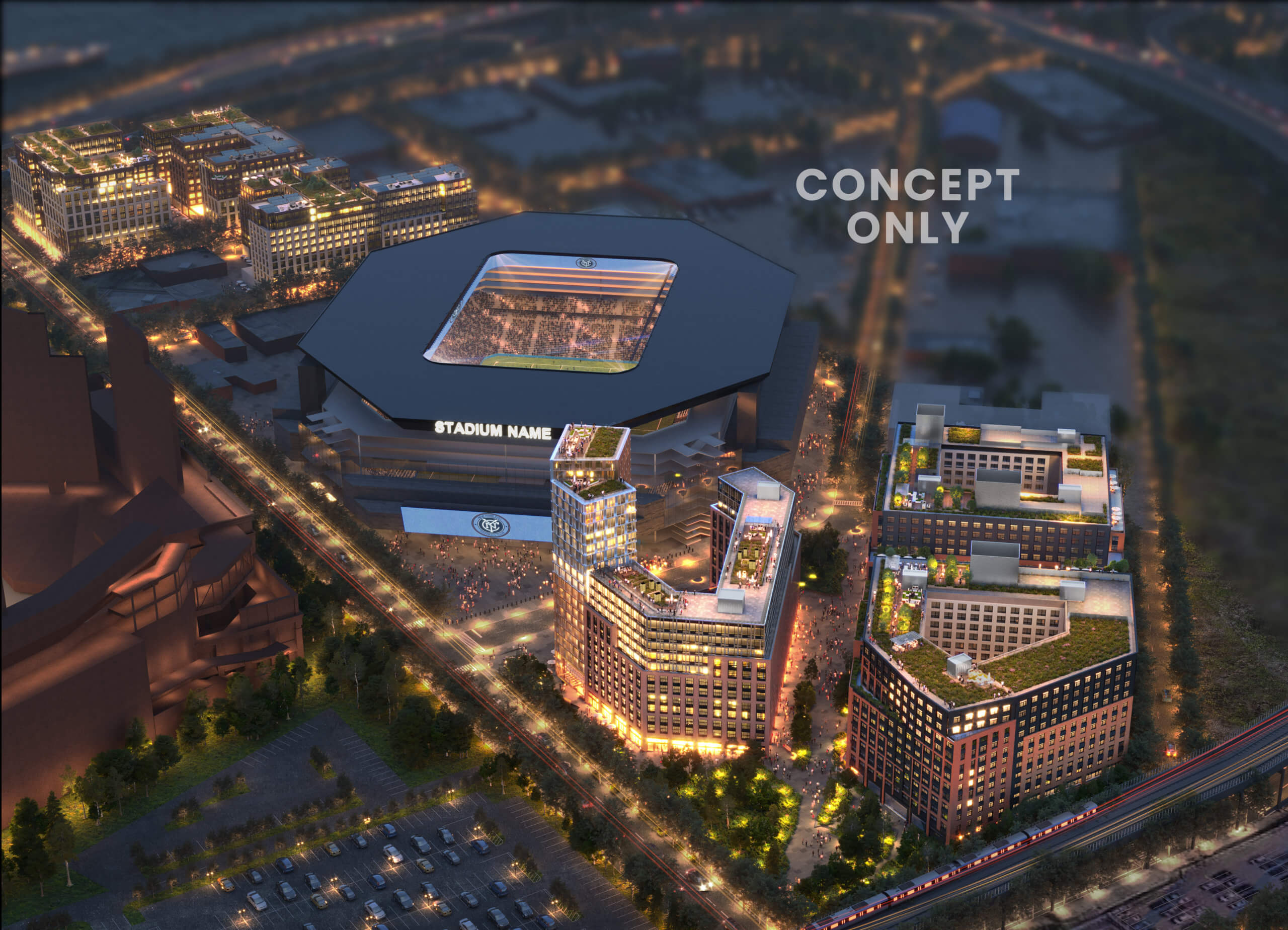
Adams was joined by his Deputy Mayor for Economic and Workforce Development Maria Torres-Springer, city Economic Development Corporation (EDC) President and CEO Andrew Kimball, City Council Member Francisco Moya (D-Queens) and Queens Borough President Donovan Richards.
Until now, Willets Point has been a Valley of Ashes, Moya said, in reference to how F. Scott Fitzgerald characterized the area in his 1925 classic novel “The Great Gatsby.”
“I want to talk about the Valley of Ashes, because it’s almost 100 years ago F. Scott Fitzgerald wrote about this very spot,” Moya said. “And for almost 100 years, Willets Point has been just that: a Valley of Ashes. Failed plan after failed plan left this corner of Queens, this corner of my neighborhood, to languish, until today. Willets Point will no longer be unsightly or a dumping ground.”
The stadium venue serves as the centerpiece of the project’s second phase, which also includes 1,400 units of “affordable housing” – in addition to the 1,100 included in Phase One, bringing the total to 2,500; a 250-bed hotel and 10,000 square feet of open space – adding to the 30,000 introduced in the first phase.
The plans for Phase One – released by the city’s Economic Development Corporation (EDC) in September – also included a 650-seat K-8 school and retail space.
Queens Development Group (QDG) – a partnership between the Related Companies and Sterling Equities – will be developing the 23-acres of city-owned land the project is being constructed upon.
The entire project – including the soccer stadium – will be built by union labor, the mayor said. It will create 1,550 permanent jobs and offer 14,200 construction jobs. It’s expected to generate $6.1 billion in revenue for the city over the next 30 years, he added.
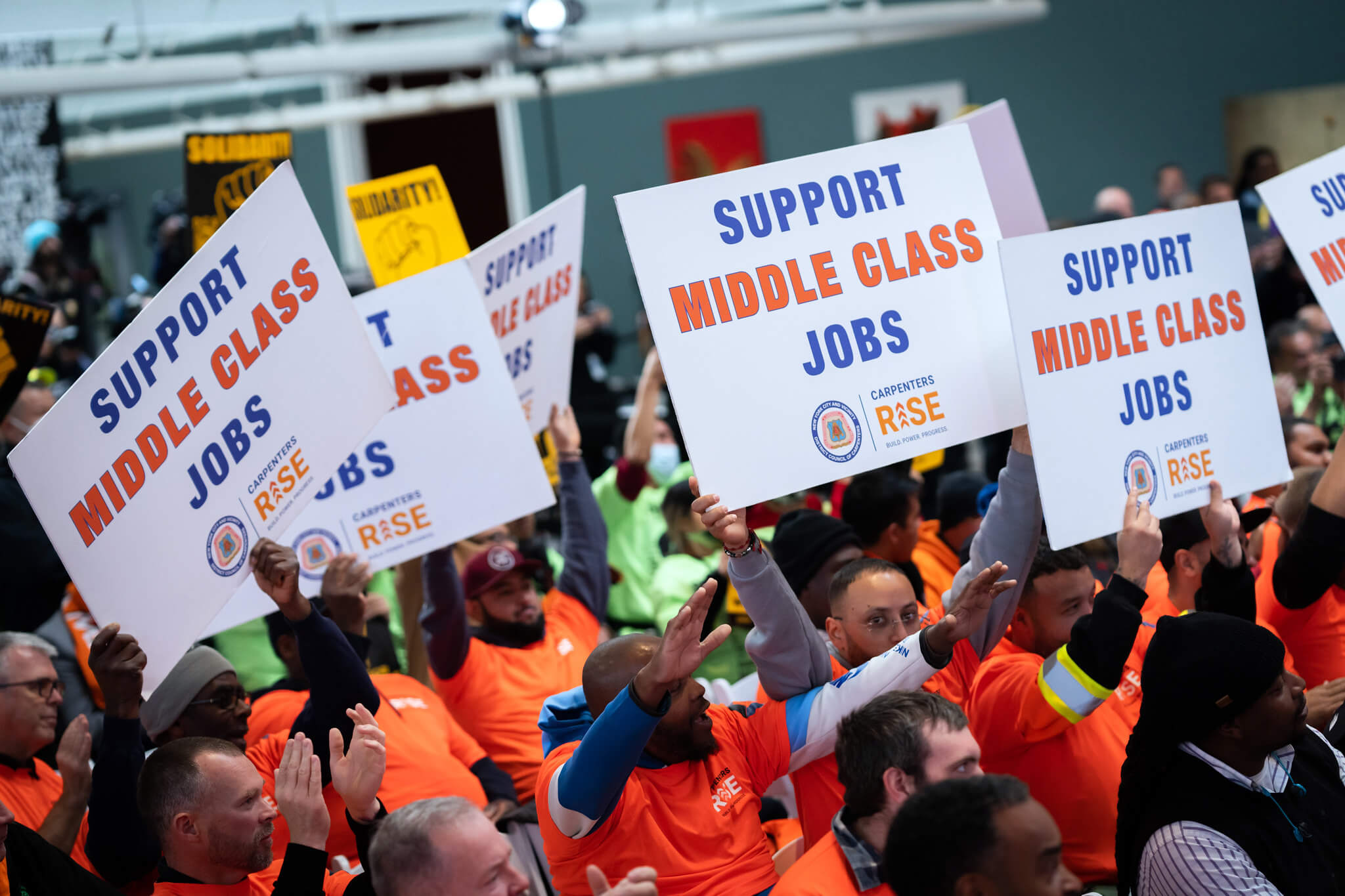
Adams said 100% of the homes being constructed, across seven buildings, will be “affordable” to families making up to $40,000 a year, making it the biggest affordable housing project in the city in decades.
“Housing is more than a place where we lay our heads. It’s the precursor to sleep that allows us to experience the American dream. Where these 2,500 units of 100 percent affordable housing will be built in this city,” Adams said. “This is the biggest 100% affordable housing project in New York City since the 1970s.”
Moya said he fought for the units to be deeply affordable, making them available to people earning a small percentage of the Area Median Income (AMI), in the first phase of the project and will do the same with the second phase. A spokesperson for the mayor said that while the exact affordability of the apartments hasn’t been determined yet, they will be between 30% and 130% AMI, with most of the units being under 80%.
While construction of the soccer stadium and the hotel will be completely privately financed, city taxpayers will be picking up the tab for construction of the affordable buildings and for public infrastructure costs, Torres-Springer said In response to a question from amNewYork Metro. But she emphasized that the cost, whatever it ends up being, will be negligible compared to the amount of money the city stands to make from the development.
“The big picture here is that we have 2,500 units of housing affordable to Queens residents and New Yorkers at a range of incomes,” she said. “And very importantly, it’s the type of project that will generate $6 billion in economic impact over 30 years and close to 16,000 jobs. So that should be looked at not just as expenditures, but as real investments in the future of this borough and this city.”
Torres-Springer estimated that the public infrastructure price tag could be in the $200 to $300 million range, but wasn’t able to provide a figure on the housing construction costs, which will be paid for through subsidies from the city’s Department of Housing Preservation and Development (HPD) and Housing Development Corporation (HDC).
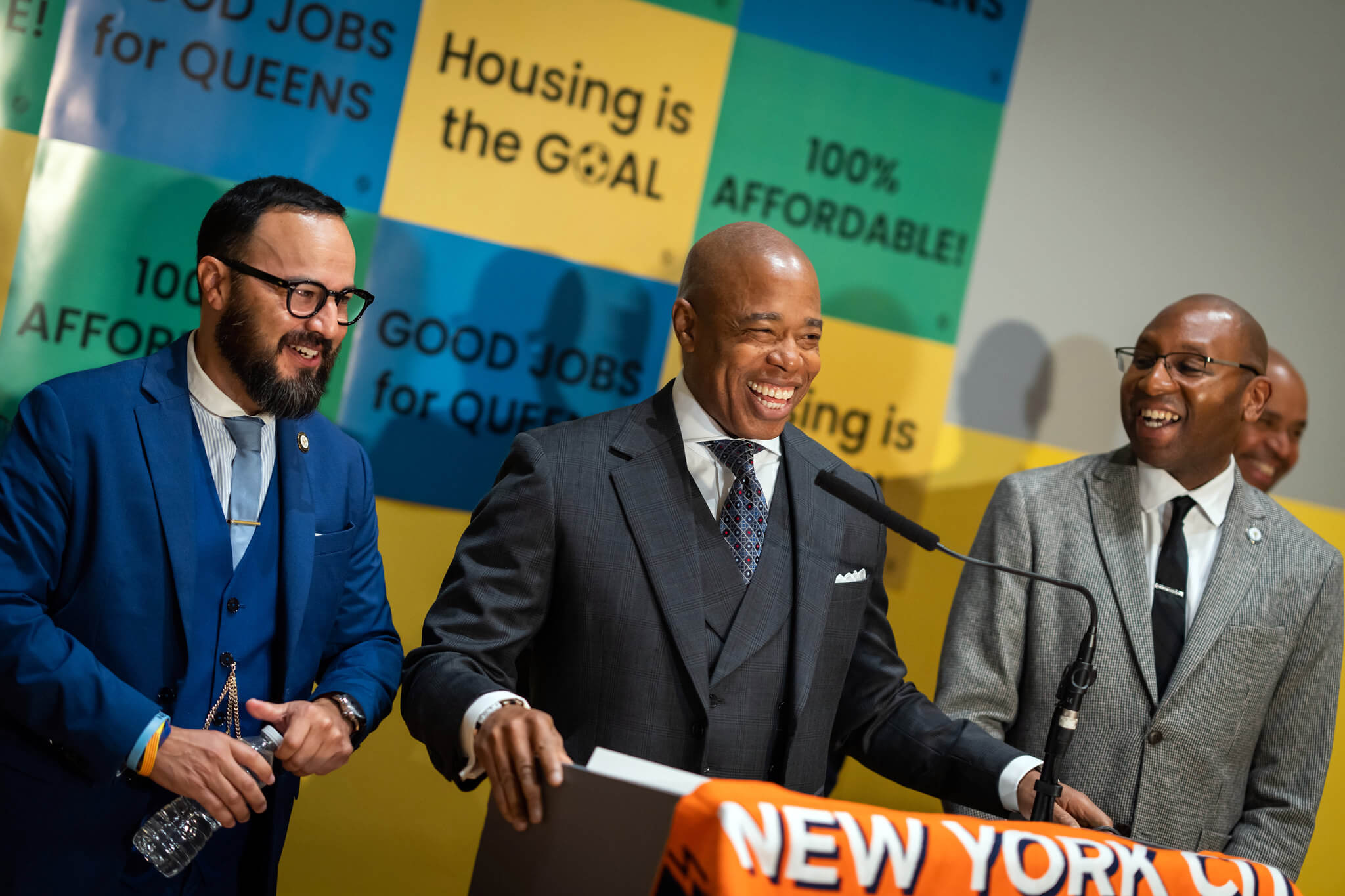
The mayor’s spokesperson said that it’s still unclear how much the city will have to shell out in HPD and HDC subsidies because the first phase of the project hasn’t yet been financed and the Phase Two still has to go through the Uniform Land Use Review Process (ULURP). That process involves getting approval from the community, Borough President and City Council.
While the spokesperson said the project probably wouldn’t start going through ULURP until later next year, Moya – who’s up for re-election next year – told amNewYork Metro that it could start as soon as the beginning of 2023 or as late as mid-2024.
“We have time to do that,” Moya said. “It could be, you know, in the beginning of the year. It could take anywhere between that or a year and a half.”
This story was updated at 5:30 p.m. on Nov. 16, 2022.



